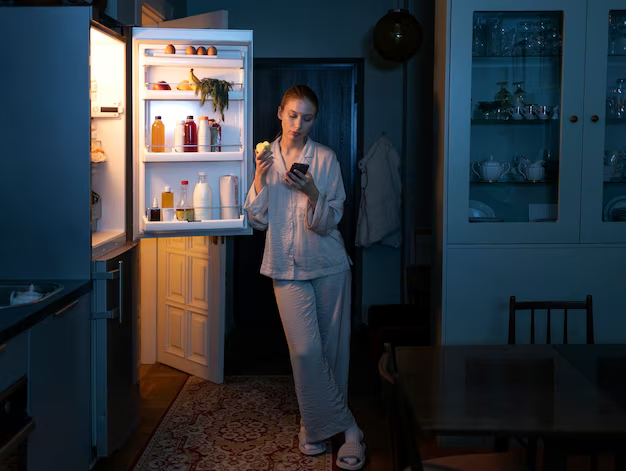Solving the Riddle: How Would You Fit an Elephant into a Refrigerator?
Ever been tasked with the whimsical challenge of fitting an elephant into a refrigerator? While it's a classic joke that often catches people off guard, it also serves as an imaginative exercise into thinking outside the box—and, in this case, the fridge! Let's embark on a journey to understand this issue more deeply, exploring it from a logical standpoint while drawing valuable insights along the way.
The Joke Behind the Task
The question, “How do you put an elephant into a refrigerator?” is widely recognized as a riddle or joke. It typically unfolds like this:
- Step One: Open the refrigerator.
- Step Two: Put the elephant inside.
- Step Three: Close the refrigerator.
It's an intentional play on the literal-minded expectation versus the simplicity of the suggestion. Here, the key lies not in the physical but the conceptual—it’s about recognizing the humorous disconnect between the actual constraints of physical space and expectations of simplicity.
🐘 Why Does this Riddle Matter?
This type of joke serves numerous purposes beyond just humor:
- Encourages Creative Thinking: Challenges like these push us to think beyond straightforward logic, encouraging creativity.
- Breaks the Ice: Perfect for light-hearted conversation starters that require more imagination than intellect.
- Educational Tool: Utilized in classrooms to demonstrate lateral thinking and problem-solving skills.
Exploring the Concept of "Putting an Elephant in a Refrigerator" Practically
While the riddle in its joke form is straightforward, let's examine the logistical impossibility of actually putting an elephant in a refrigerator and the lessons such examination can provide:
The Physical Constraints
Size and Proportions:
- Elephant Size: Elephants are among the largest land animals, often weighing between 2,000 to 14,000 pounds. This makes the idea of fitting one into a standard refrigerator both comical and physically impossible.
- Refrigerator Dimensions: The average household refrigerator is simply not designed to accommodate anything near the size or weight of an elephant.
Yet, visualizing this task can encourage creative problem-solving and innovative thinking, which can apply to real-world tasks.
Tackling Impossible Problems
Breaking Down Challenges:
- Assess the Challenge: Start by defining the parameters and constraints. This helps in understanding the extent of the problem.
- Simplify the Objective: Stripping a problem to its core components can sometimes reveal simpler solutions or more manageable tasks.
- Creative Solutions: Sometimes, the objective isn't about changing reality but changing perception—finding innovative ways to tackle complex challenges.
Bridging to Real World Applications
Thinking Outside the Box:
Such exercises help to:
- Innovate Solutions: Encourages approaching tasks with fresh perspectives and innovative solutions.
- Overcoming Limitations: While actual elephants and refrigerators can't change size, in business or personal challenges, considering impossible tasks can lead to breakthroughs and remove mental barriers.
How Can This Exercise Benefit You in the Real World?
While no practical way exists to fit an actual elephant into a refrigerator, the exercise is all about mindset. The core lesson is adapting your perception and methods when faced with difficult or oversized tasks.
Applying Lateral Thinking in Everyday Situations
Solve Real Problems with These Tips:
- Innovative Team Building: Use such riddles to form engaging discussions within teams to foster creativity and new solutions.
- Educational Insights: Helps teachers and educators illustrate abstract concepts through humor and creativity.
- Personal Development: Cultivate more innovative mindsets to tackle obstacles in personal and professional settings.
😊 Key Takeaways on Creative Problem Solving
- Stay Open-Minded: Approaching problems with the realization that solutions may come from unexpected angles.
- Embrace Humor: Using humor can defuse tension and open pathways to creativity and collaboration.
- Encourage Imagination: Fostering a sense of imagination enables one to visualize alternatives to conventional solutions.
Practical Tips Summary
Here's a visualized, easy-to-skim list of practical benefits to employing this lateral thinking in problem-solving:
- 👀 Explore Beyond Logic: Sometimes, logic needs a companion—imaginative thinking.
- 😊 Laugh and Learn: Inject humor and levity into complex discussions for new insights.
- 🧠 Out-of-the-Box Solutions: Encourage moving past traditional methods to find creative solutions.
- 👫 Team and Personal Growth: Enhance teamwork and personal development using imaginative exercises.
A Novel Approach to Decision Making
The "elephant in a refrigerator" riddle demonstrates a fundamental principle of decision-making and creative thinking—it isn’t always about the direct answer, but rather about finding unique paths to resolution.
Building an Innovative Mindset
Steps to Cultivate Creativity:
- Challenge Assumptions: Start questioning standard procedures and assumptions. This will develop a habit of exploring "what-ifs".
- Employ Metaphors: Use metaphors like the elephant to compare complex processes in simpler, comprehensible terms.
- Regular Practice: Exercises similar to the elephant riddle practiced regularly provide a mental workout that sharpens intuitive responses to future challenges.
Ultimately, such creative thinking expands horizons beyond simple problem-solving. It fosters a resilient, balanced mindset ready to tackle all sorts of challenges—big or small, real or conceptual. By understanding and applying the lessons from amusing brain-teasers, you can open doors to enhanced problem-solving skills across life's myriad situations.
